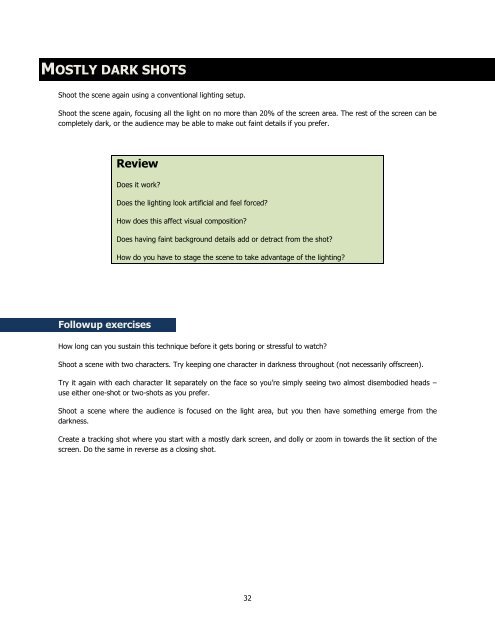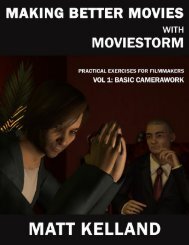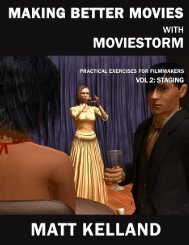Making Better Movies with Moviestorm Vol 3: Sound and Light
Making Better Movies with Moviestorm Vol 3: Sound and Light
Making Better Movies with Moviestorm Vol 3: Sound and Light
You also want an ePaper? Increase the reach of your titles
YUMPU automatically turns print PDFs into web optimized ePapers that Google loves.
MOSTLY DARK SHOTS<br />
Shoot the scene again using a conventional lighting setup.<br />
Shoot the scene again, focusing all the light on no more than 20% of the screen area. The rest of the screen can be<br />
completely dark, or the audience may be able to make out faint details if you prefer.<br />
Review<br />
Does it work?<br />
Does the lighting look artificial <strong>and</strong> feel forced?<br />
How does this affect visual composition?<br />
Does having faint background details add or detract from the shot?<br />
How do you have to stage the scene to take advantage of the lighting?<br />
Followup exercises<br />
How long can you sustain this technique before it gets boring or stressful to watch?<br />
Shoot a scene <strong>with</strong> two characters. Try keeping one character in darkness throughout (not necessarily offscreen).<br />
Try it again <strong>with</strong> each character lit separately on the face so you’re simply seeing two almost disembodied heads –<br />
use either one-shot or two-shots as you prefer.<br />
Shoot a scene where the audience is focused on the light area, but you then have something emerge from the<br />
darkness.<br />
Create a tracking shot where you start <strong>with</strong> a mostly dark screen, <strong>and</strong> dolly or zoom in towards the lit section of the<br />
screen. Do the same in reverse as a closing shot.<br />
32




